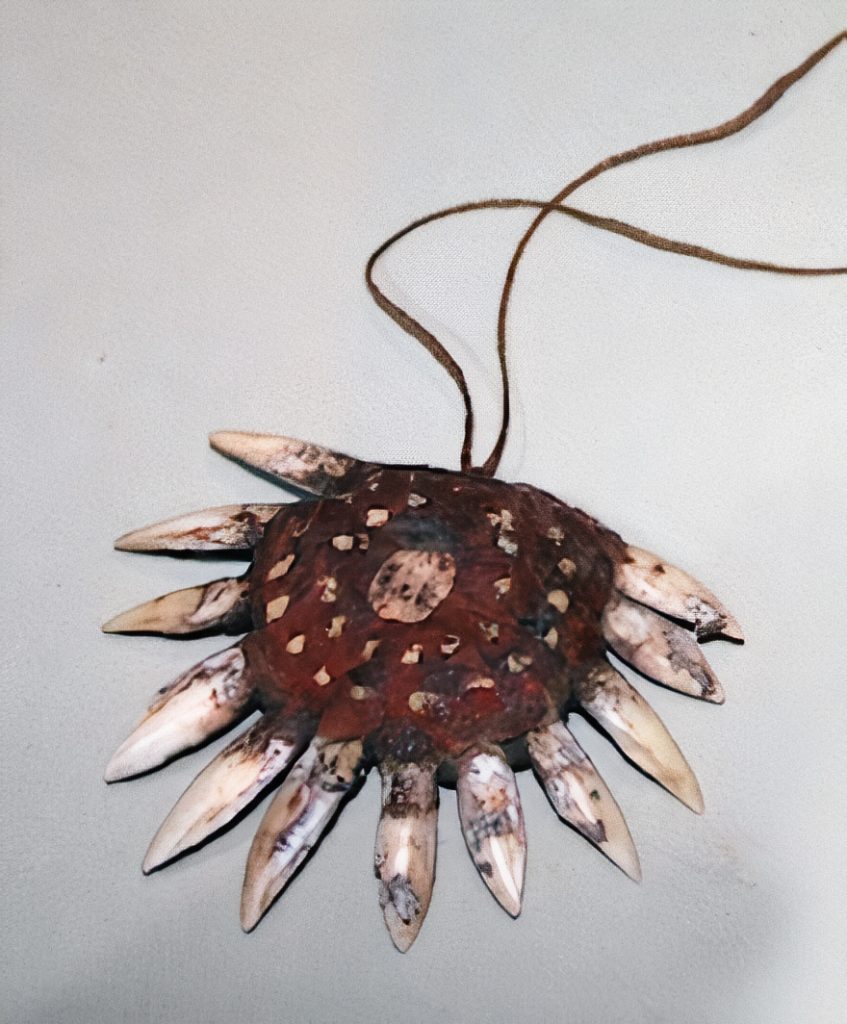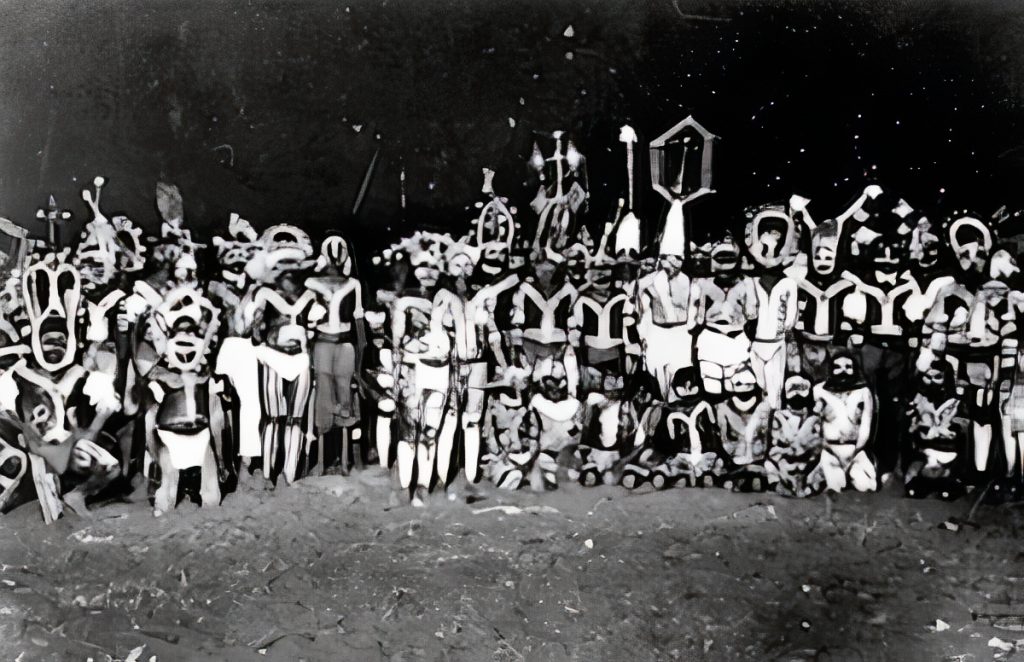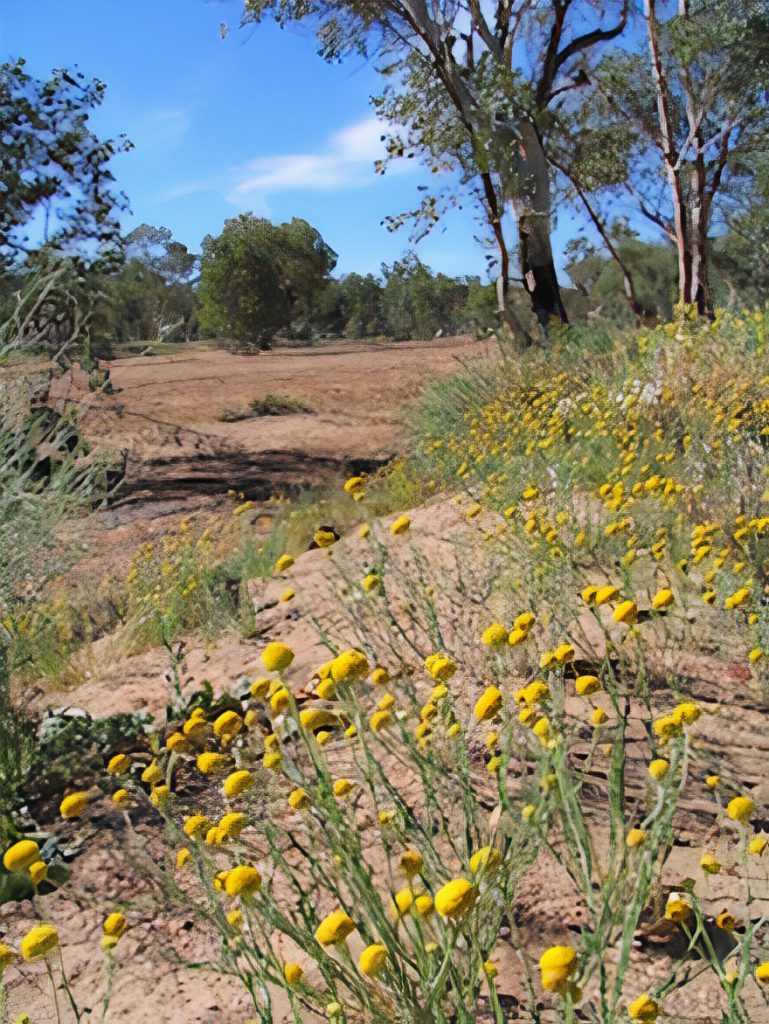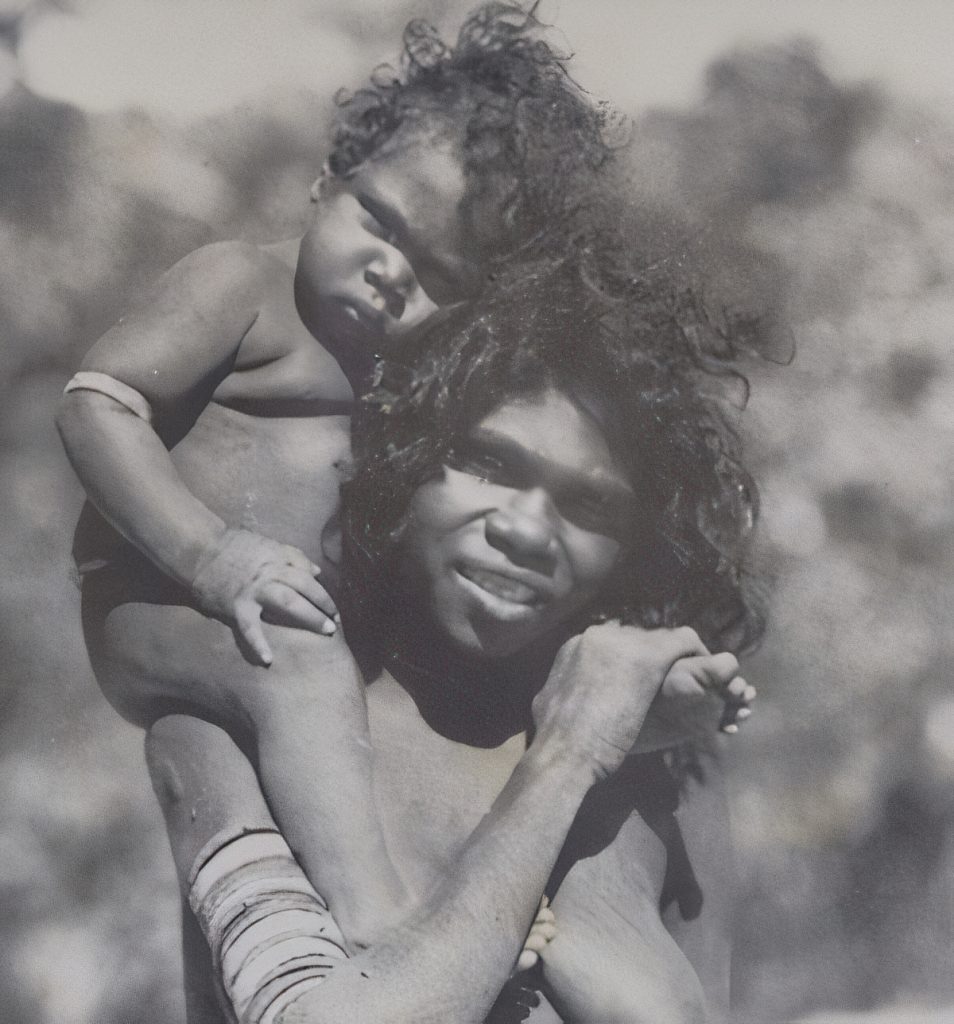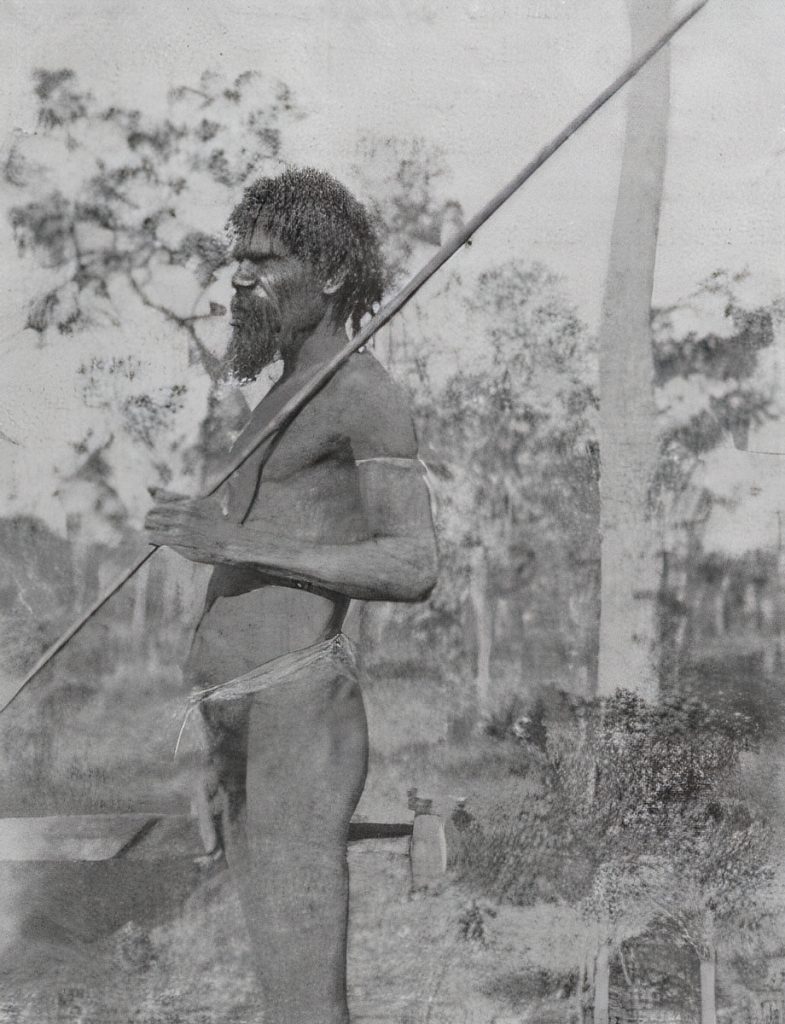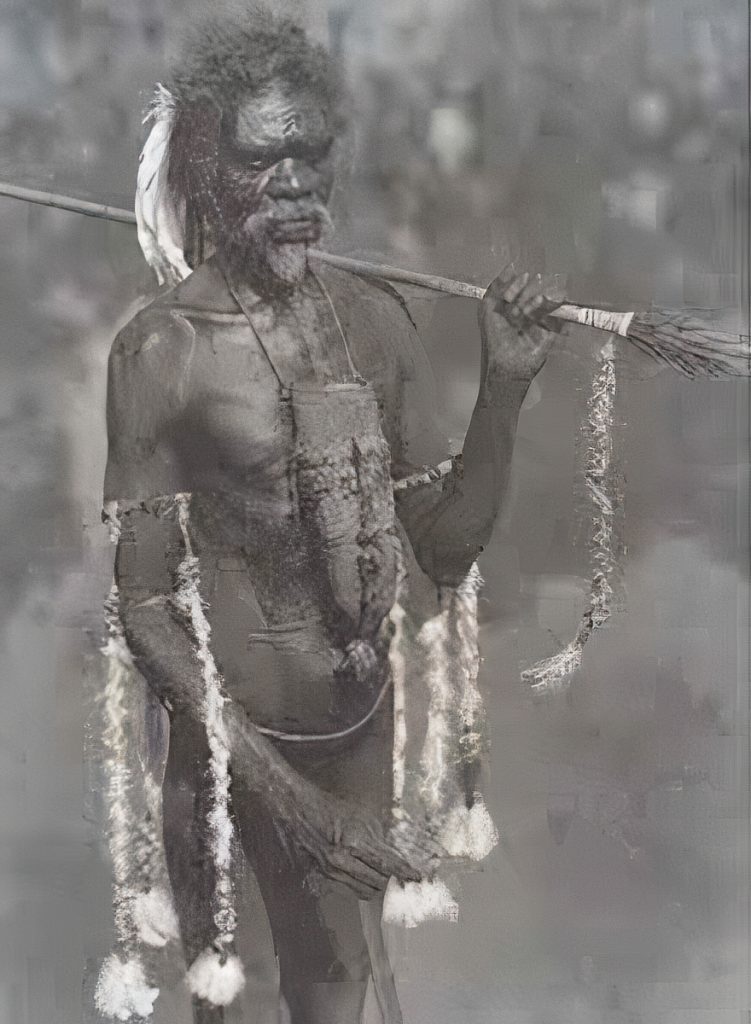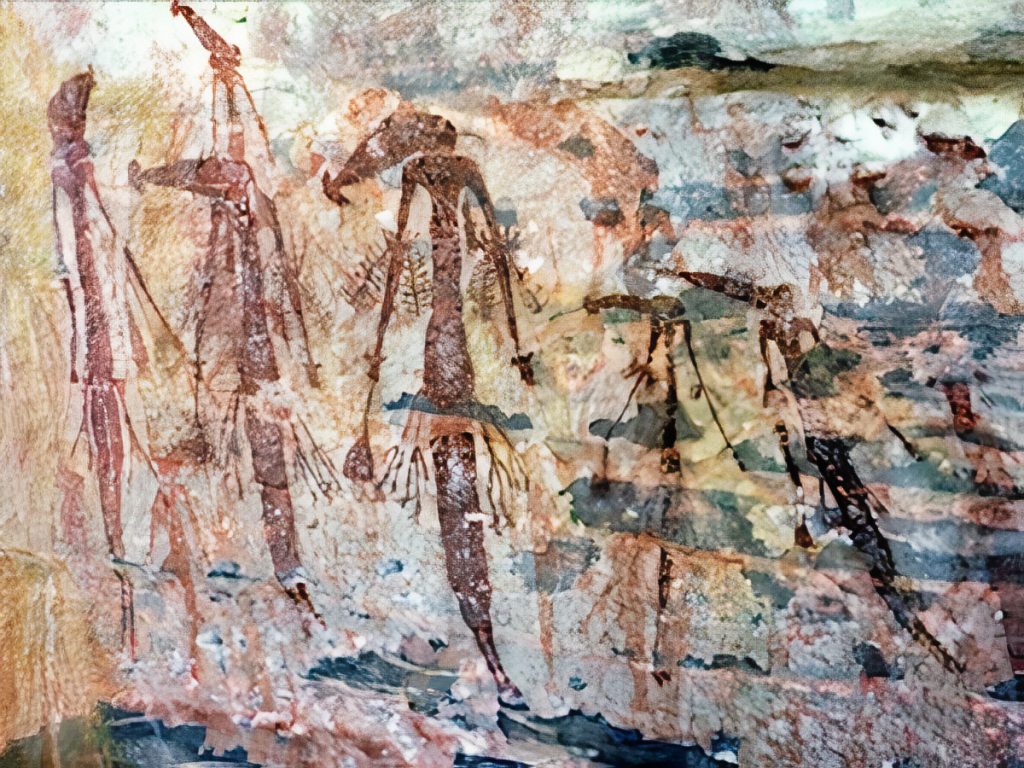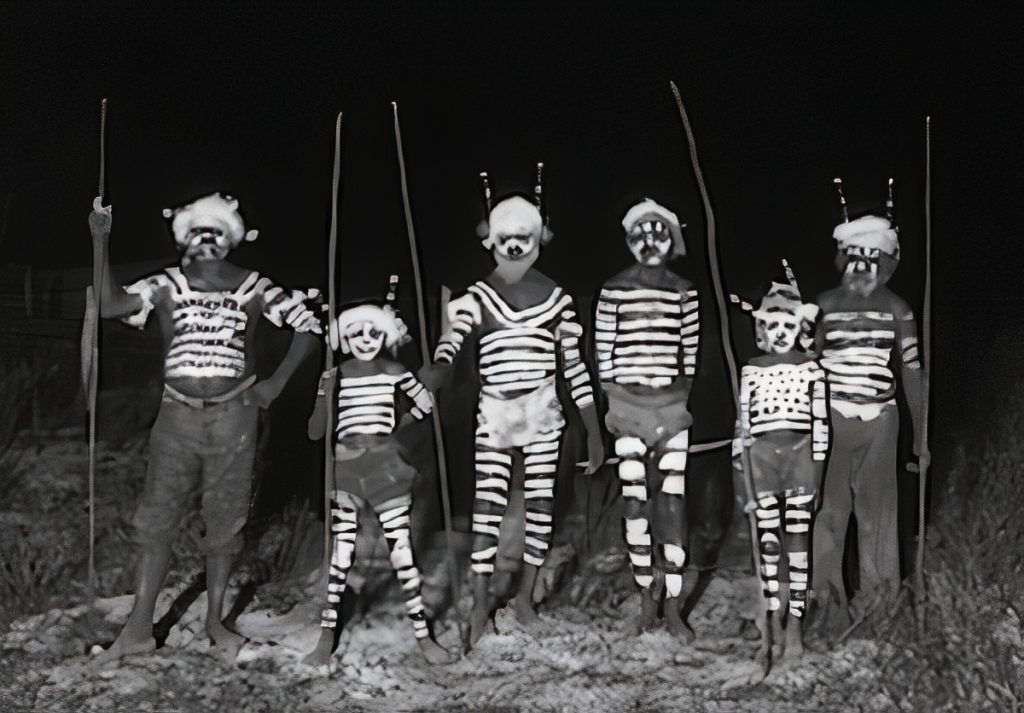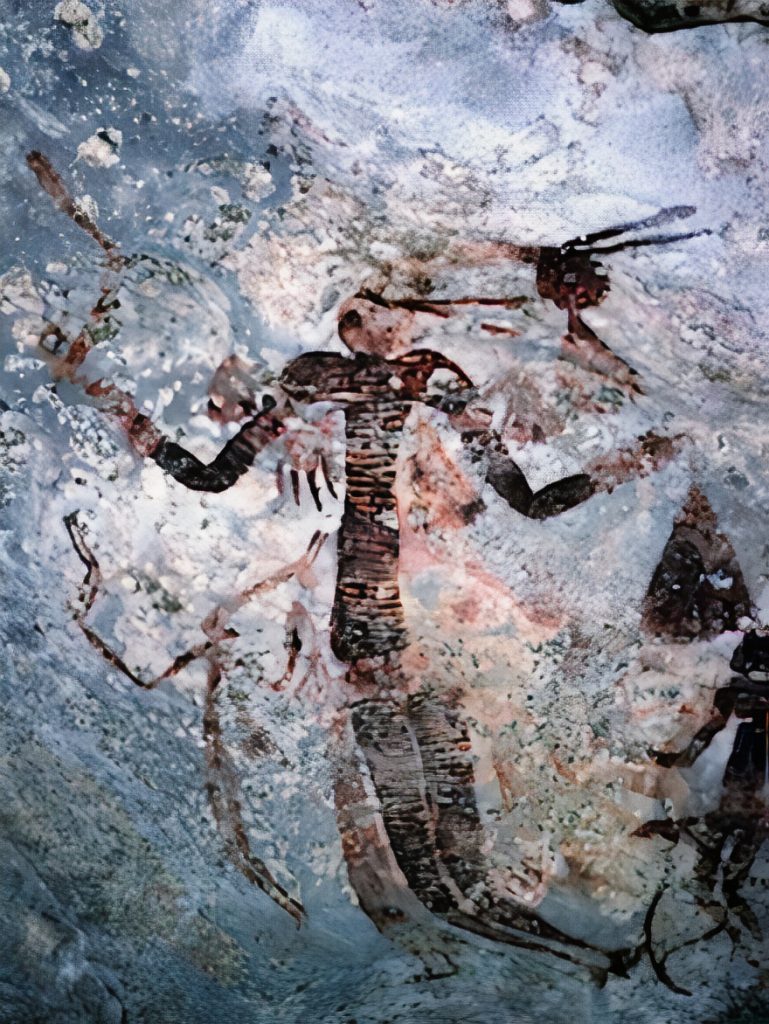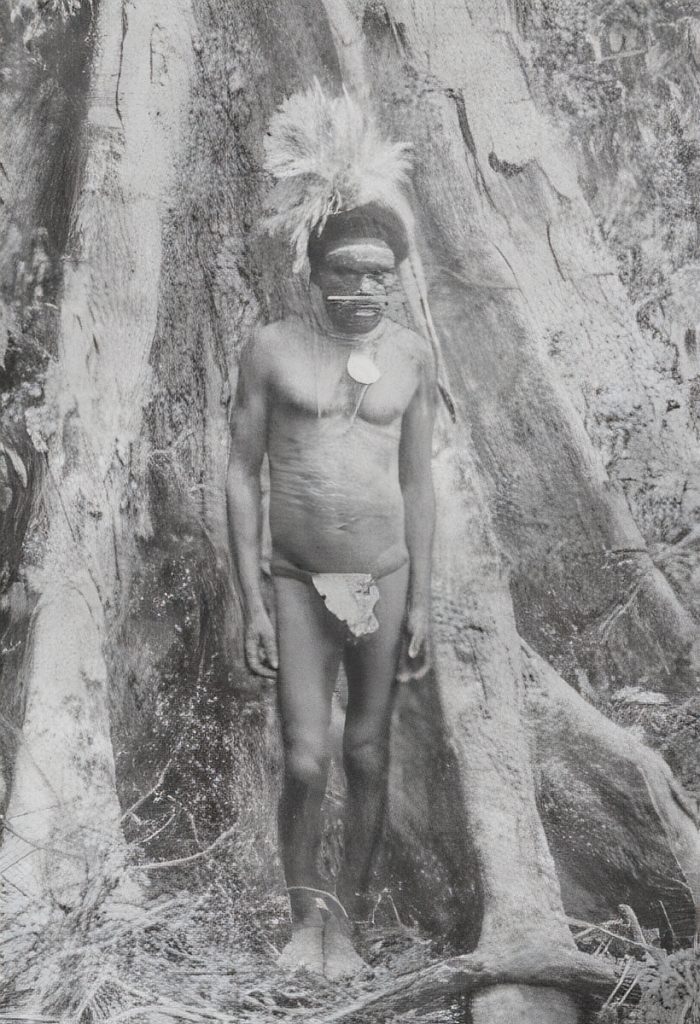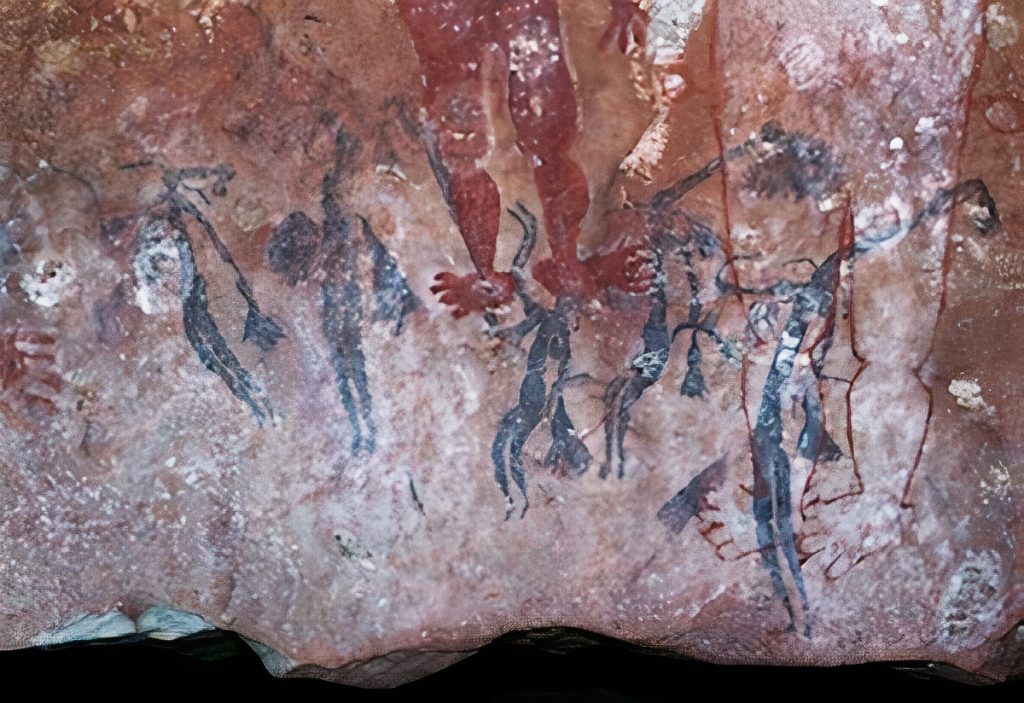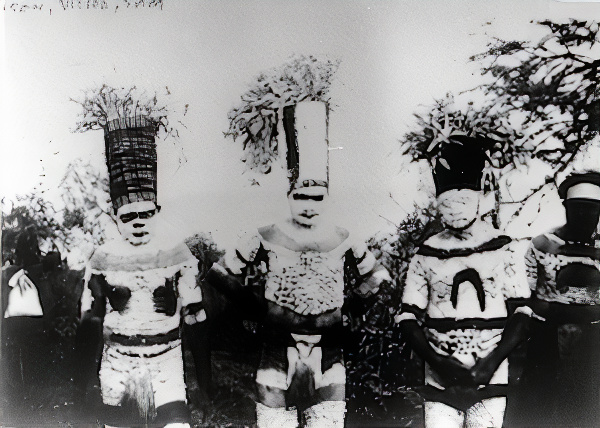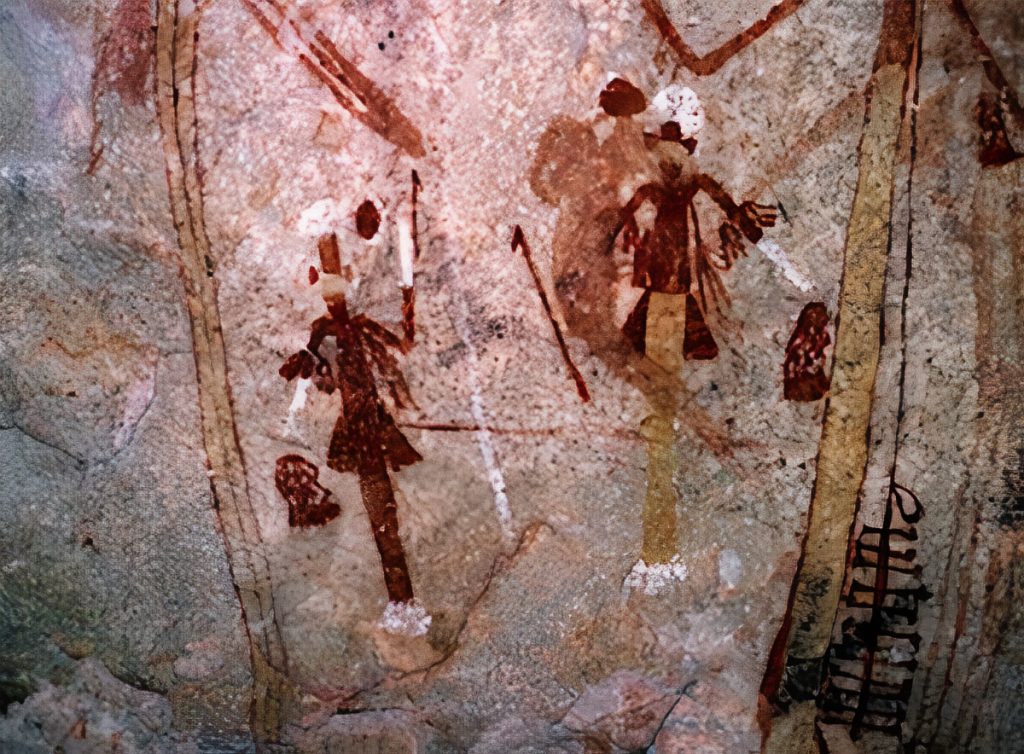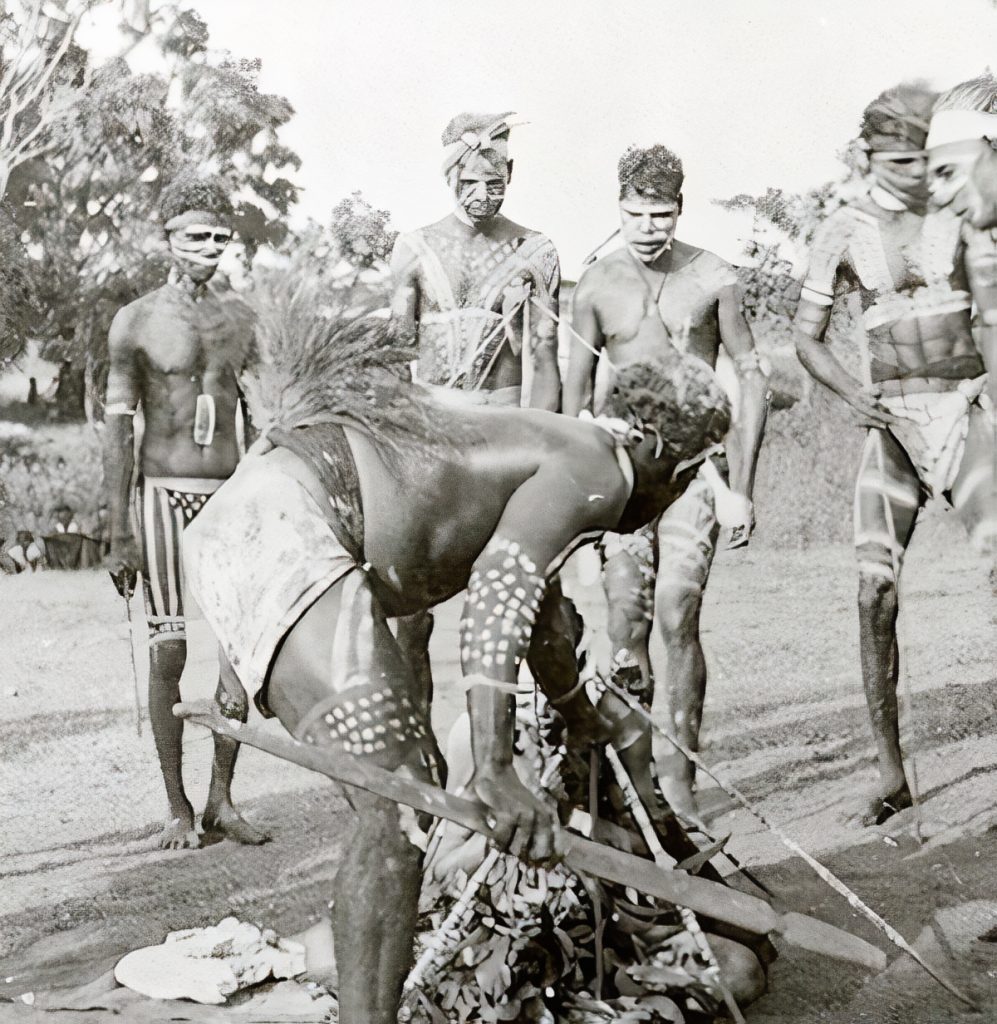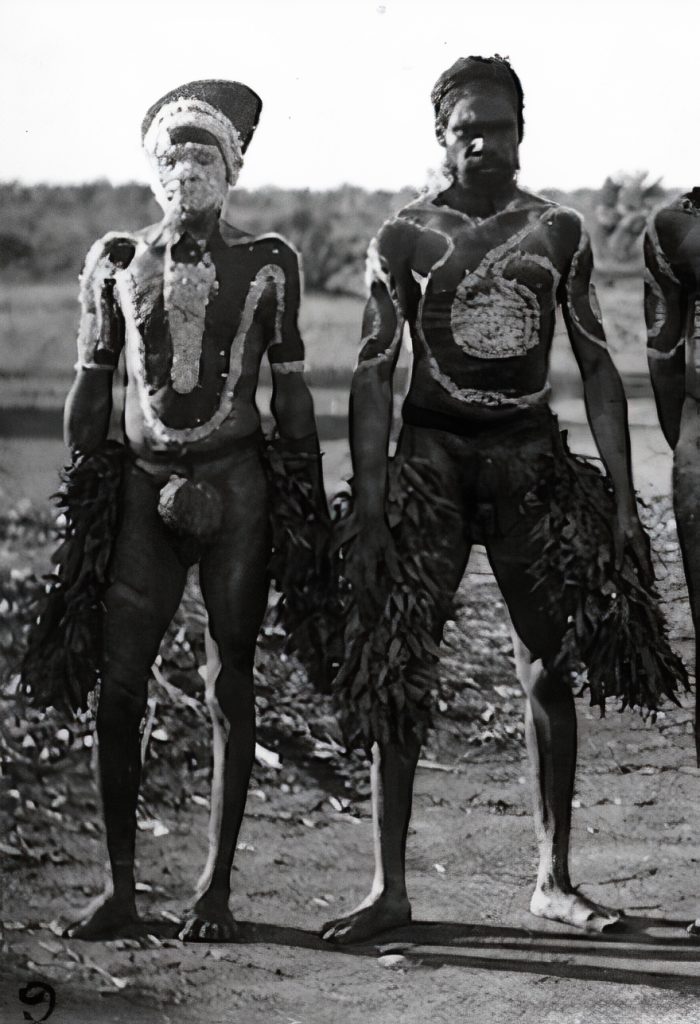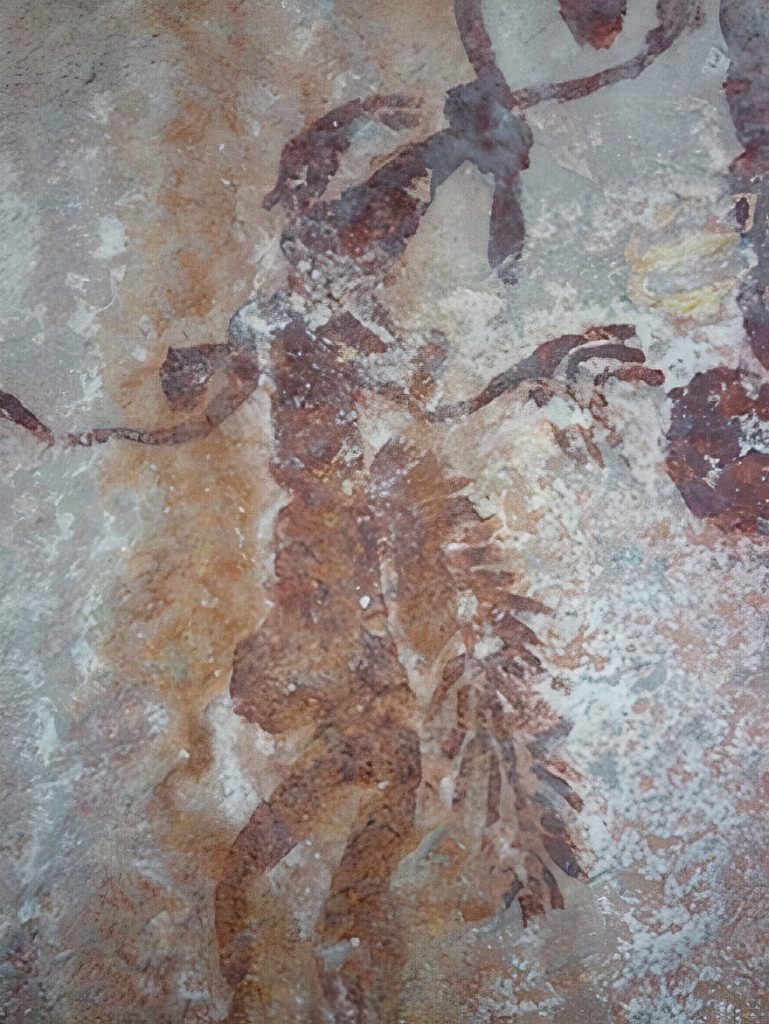ABORIGINAL BODY ADORNMENT
We all like to dress up and look our best amongst friends and family, and Aboriginal people are no different. During day-to-day activities in the past, very little was worn and the basic adornments were simple head bands, arm bands, and waist belts. Like jewellery, other small items were often added, allowing people to express their individuality within the norms of the society.
In preparation for ceremonial occasions, past and present, Aboriginal people collect plant material which they manufacture into elaborate headdresses and other body decoration. They hunt specific birds which are needed to provide colourful feather decorations, and they sometimes cover their bodies with cotton-wool like material from crushed bush flowers, other plants, and bird feather down.
The body adornments and body painting worn by Aboriginal people varied throughout the country. In the description of body adornments here, they are divided into two groups: those worn as everyday items, and those reserved for ceremonial occasions.
Everyday body adornments
Most of the everyday items are no longer worn, having been replaced by modern clothing. (In the past, people were naked, and only in the coldest parts of southern Australia did they wear possum fur and kangaroo fur cloaks during winter.)
Everyday body adornments, serving decorative and sometimes functional roles, included:
- Headbands of various types, worn by men and women. They included narrow strings, thicker cords, and broad bands, made from multiple layers of human hair or bush string tied around the head. Men often wore a broad form with a thin layer of white clay pushed into the string mesh, and painted over.
- Small feather bunches were tied with bush string to the hair or headband.
- In Central Australia, gum-nuts were often attached to the hair of women, and occasionally of men.
- Other small decorative items attached to the hair or hung from the body included flowers, animal teeth set in resin, and the bushy tails of small animals.
- In many parts of the country, the nasal septum was bored and small lengths of bone and wood were worn as nose pieces (“nose bones”).
- Around the neck, necklaces made from human hair string and animal fur string were common. In coastal areas, small shells were pierced and strung on the strings. Inland, seeds were drilled and strung.
- Simple cane and string arm bands were used to carry small items, such as a stone knife, tucked below the band.
- Waist belts made from a variety of materials, including human hair string, kangaroo fur string, bush string made from tree fibres, and bark strips. A small lizard or other creature caught during the day could be tucked into the waist belt, leaving the hands free for further hunting. Items such as boomerangs, clubs and hatchets (small stone axes) could also be tucked into the waist belt.
- In Central Australia, men attached a small decorative hair-string tassel to their pubic hairs, while women wore short hair-string pubic aprons.
- Body decoration also entailed scarification, when lines and patterns were cut into people’s skin, producing permanent cicatrises (raised scars).
- The skin was often coated with animal oils and fats mixed with charcoal (when someone wished to appear blacker) and ochre (when someone wished to appear more colourful). These protected the skin from drying and cracking from the sun and wind.
Ceremonial Body Adornment
On important ceremonial occasions, often lasting days, people still go to great lengths to decorate their bodies. Bird down and plant down (from crushed-up small desert flowers) is applied to men’s bodies using human blood as the glue, replaced nowadays with flour and water, and other sticky substances. Sometimes the face and body of performers is almost completely obliterated by a thick layer of down. Body paint is applied to both men and women.
Aboriginal people have recorded their ceremonial dress in rock paintings and engravings throughout the country. Circles, ovals and other motifs in Central Australian rock paintings and engravings often replicate the designs applied to the bodies of performers.
Ancient Aboriginal paintings in rock shelters across northern Australia depict human figures wearing a range of headdresses, arm bands, waist appendages, body paint and other body adornments, still worn on ceremonial occasions to this day. In the Kimberley region of Western Australia in particular, three main groups of ceremonially-dressed human figures, each with their own unique body decoration, were described by rock art researcher David M. Welch in 1992.
Tasselled Figures are characterised by wearing tassels from their waists, headdresses, arms and shoulders, and belong to an early time. These are followed by Bent Knee Figures, which lack tassels, wear tall conical headdresses (ngadari, pronounced na-da-ree), and are associated with triangular shapes most likely representing bunches of emu feathers (yululu, pronounced you-loo-loo). The third group, which is painted later again, is Straight Part Figures, characterised by wearing a barrel-like or bucket-like headdress known locally as ngumuru (pronounced noo-moo-roo).
Minyipirriwoi, a man from Arnhem Land in the Northern Territory, dressed with a simple feather headdress, a string belt around the waist, and multiple tassels hanging from his armbands. He carries a ceremonial bag hanging from his neck and a ceremonial stingray-barbed-spear, which has a tassel attached. 1936.
Photograph by Donald Thomson,
from Thomson Time: Arnhem Land in the 1930s..
Headdresses
Elaborate headdresses are made from a variety of materials. Bucket-like and conical headdresses are manufactured from rolled-up paperbark, tied around with bush string, and painted over. Other headdresses consist of radiating sticks with feathers and down attached to their ends. All sorts of constructions are worn on the head. When they are very large, the hands are used to hold them and keep them in place.
A man from Atherton in northern Queensland wearing a parrot feather headdress, a mussel shell headband, a nose bone, a necklace with a pearl shell pendant amulet, and horizontal scars over his chest and upper abdomen. A leaf has been added to a modern leather belt for modesty.
From 17 Years Wandering Among the Aboriginals.
Waist Decoration and Appendages
Sometimes broad belts, made from human hair string or bush string, are made specifically for ceremonial occasions. Across northern Australia, ceremonial skirts or aprons are made from strips of bark or bush string and hang down like grass skirts.
Various items are tucked into the waist belt as part of ceremonial dress. These include string tassels (in eastern Arnhem Land, and in the Kimberley in the past) bunches of emu and other feathers (throughout Australia), branches (throughout Australia), pearl shell (on the Kimberley coast), and woven items (across northern Australia). Many items of ceremonial dress appear on early human figures painted by Aboriginal people.
Other Ceremonial Items
Other items worn on ceremonial occasions include chest cross bands, anklets with leafy branches (which make a rustling noise when people dance), and ceremonial bags, which are worn by young boys undergoing initiation and initiated men in Arnhem Land.

